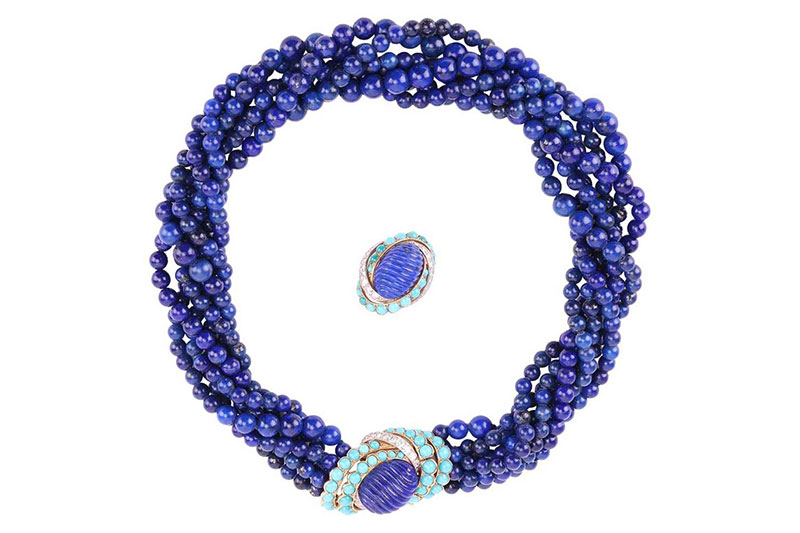Is There a Market for Vintage jewellery?
The accessibility of the vintage jewellery market has transformed significantly in recent years
01/05/2024
“Fashion comes and goes but style lasts forever.” – Coco Chanel
The jewellery market is currently booming, with predictions for further growth throughout each segment that make up this lucrative portfolio. While Vintage jewellery is a rather small slice in this cake, it is experiencing a surge in popularity reflecting a growing appreciation for these timeless and unique pieces. With massive increases in demand and limitations on supply, the Vintage jewellery market is poised for expansion.
A Kutchinsky enamelled and textured 18ct gold link bracelet
Some of the most defining features of today’s society are uniqueness and individuality, which makes the allure of Vintage jewellery a far more attractive investment against modern mass-produced accessories. Vintage pieces carry a level of distinctiveness and nostalgia that is impossible to replicate.
Consumers have also become increasingly conscious of their ecological footprint, fuelling a demand for sustainable and ethical products, and the jewellery industry is no exception. The purchase of a Vintage necklace or ring can be viewed as a form of recycling or upcycling, while concerns of questionable practices such as conflict diamonds are bypassed due to the lifetime of a piece.
Andrew Grima - an 18ct gold and diamond brooch
The accessibility of the vintage jewellery market has transformed significantly in recent years through digital technology. Indeed, the Covid pandemic stimulated an unprecedented growth in online sales.
Encompassing a number of significant eras in 20th century jewellery production, the styles of Vintage jewellery fit well with current fashion trends. Let’s briefly explore each of these periods:
Art Deco (1920s & 30s): bold geometric shapes and vibrant colours are characteristic of this era and remain a firm favourite amongst collectors. Cartier, René Boivin, and Van Cleef & Arpels are names synonymous with the Art Deco movement.
Cartier - an emerald-set brooch in the form of a stylised owl perching on branch
Retro (1940s): amusing and bright creations from relatively inexpensive materials such as plastic, glass, wood, enamel, and synthetic gemstones.
Mid-century (1950s): a return to precious metals in feminine designs, these pieces burst with all the optimism and opulence of the post-war world.
Modern (1960s – 1980s): abstract and naturalistic, jewellery of this period became increasingly linked to sculpture and design, popular names include Andrew Grima, John Donald, and Stuart Devlin.
When we consider the value of Vintage jewellery, there are several factors that play a role in the attractiveness and collectability of a piece; the designer or maker - especially if a piece is signed, the materials such as gold, gemstones and diamonds, the execution of craftsmanship, the history, the condition, and most-importantly the provenance and rarity.
Vintage jewellery remains a timeless accessory worthy of investment and admiration, testament to the aesthetic trends and design styles of a bygone era. So, in answer to the question… Yes! There is most definitely a thriving market for Vintage jewellery!
Read More
How Can You Tell if Jewellery is Vintage?
How Do I Know if my Jewellery is Valuable?
Are Jewellery Valuations Free?

Nicky Houston
Our Head of Jewellery, Watches & Silver... Nicky is a highly respected Auctioneer & Valuer, who had dreams of becoming an artist. Whilst she may not have made it as a successful artist herself, Nicky has helped many a customer to successfully sell and buy beautiful pieces of jewellery and works of art over her many years working within the auction industry.
Jewellery Silver & Objects of Virtue Watches
Are you thinking of selling any Vintage jewellery?
With a monthly global audience of over 10 million, Dawsons can secure the best price for you.
Get in touch with an expert valuer today for confidential sales advice, we would be delighted to help:



